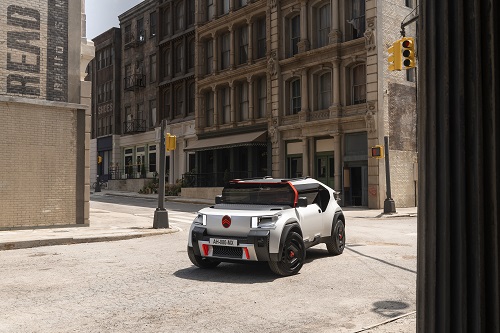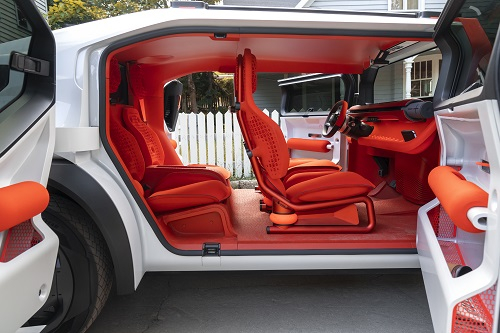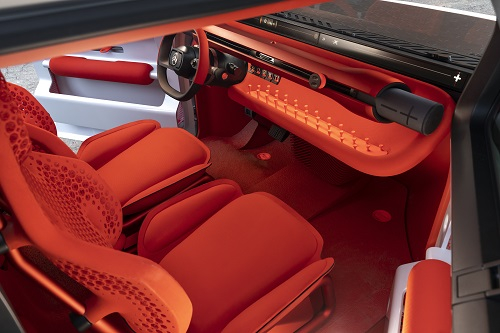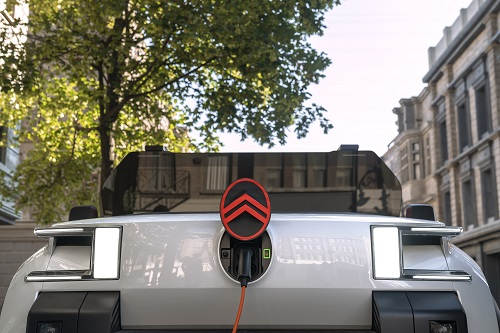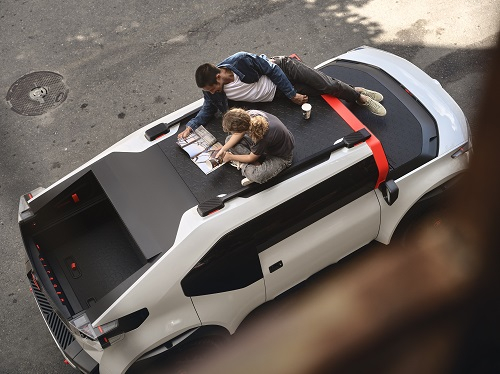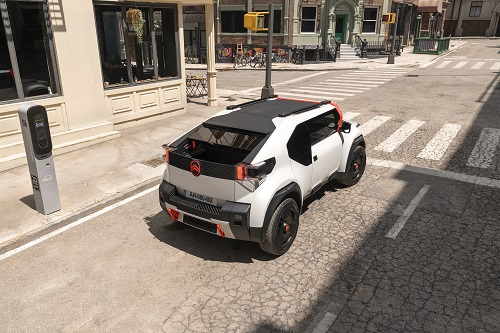Citron’s future electric models will incorporate many ideas and innovations from oli.
Citroën CEO, Vincent Cobée, explains: “We called this project ‘oli’ as a nod to Ami, and because it sums up what the vehicle is all about – further proof that only Citroën can deliver no-nonsense, All-Electric mobility to all kinds of people in unexpected, responsible and rewarding ways.”
Through the use of lightweight materials, oli can extend the range of the 40kWh battery on board to up to 248 miles between charges. Citroën has also limited the top speed of the oli to 68mph to maximise efficiency, while rapid charging capability ensures a charge from 20% to 80% takes just 23 minutes.
By supporting smart ‘Vehicle to Grid’ (V2G) capability, the potential exists for a vehicle like oli to make money for its owner by storing excess energy from home solar panels, and selling this back to energy suppliers, as well as helping to manage power issues when there is peak demand or a power outage in the grid.
Citroën oli also shows how a vehicle can perform as a home away from home for summer trips to the beach or a camping weekend in the hills, thanks to its ‘Vehicle to Load’ (V2L) capability. Considering its 40kWh battery and a power socket output of 3.6kW (the equivalent of a 230v 16amp domestic socket), oli can theoretically provide power to a 3,000 w electric device for around 12 hours.
Instead of a conventional boot, oli features an unexpected, inspired exercise in useful product design, and comes with a pick-up bed inside the boot for added practicality. The independent rear seat headrests pop up into the roof, the rear screen glass opens upwards, with the flat 994mm wide removable load bed expanding in length from 679mm to 1050mm.
The tailgate folds down and with the load bed panel removed there is up to 582 mm height between the vehicle floor and the rear glass. With the panel in place, 330 mm height of useful and secure trunk space is available below. The removable bed panel is light and flat, and made from the same recycled cardboard structure as the bonnet and roof panels.
Thoughtful rails each side of the bed allow users to attach hooks or accessories, and additional storage boxes are located on the sidewalls to provide secure undercover stowage.
Another key area of innovation is wheels and tyres. The ingenious and efficient 20-inch wheel and tyre combination fitted to oli marries a new hybrid wheel prototype design with a conceptual, sustainable and intelligent tyre co-created with Goodyear.
Because full aluminium wheels are expensive and energy-intensive to produce and full steel wheels are heavy, the decision was taken to blend the two. The resulting hybrid wheels are 15 per cent lighter than the equivalent full steel wheel, contributing to an overall vehicle weight reduction of 6kg. There are also design benefits to consider.
Auto Brief Snippets
- Citroën oli concept showcases Citroën’s innovative take on electric family mobility.
- Designed with sustainability in mind, oli is a statement of design and versatility.
- All-electric powertrain features a 40kWh battery and is capable of up to 248 miles.
- Innovative use of new materials leads to lower weight, cost and environmental footprint.
- oli takes sustainability to a new level with use of 100% recycled materials, while vehicle parts can be reused or recycled throughout ownership.
- Vertical design language showcases new design direction for Citroën.
- V2G capability allows owners to potentially store and sell energy back to grid.
